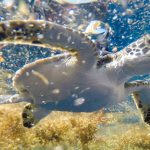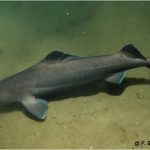← Back
Franciscana dolphins are staying close to home
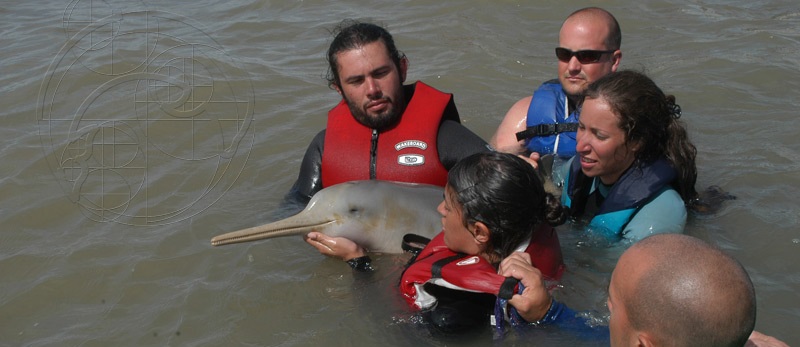
Franciscana dolphins are small cetaceans living along the South American coast. They are threatened, in particular from anthropogenic activities, including fishing gear. Argos can help to better assess their home ranges and behaviors, which should help in protecting them.
To protect a species, you first need to know where, why (from what threat(s)) and when. Then you can build regulations, promote actions and manage the whole. For this, you need to have information on the behavior of the animals during their life cycle. Argos satellite telemetry is a way of obtaining this information.
The franciscana dolphin (Pontoporia blainvillei) is the most threatened cetacean species in the Southwestern Atlantic. They live within a limited area, in shallow waters (30 m, up to 50 m) off the coasts of Argentina, Uruguay, and Brazil (from 18°25’S to 41°10’S in latitude). This places them in a zone with more and more human activities, with associated threats. Bycatch in gillnets from artisanal fishing has been the main threat for the species for about 50 years.
Tagging franciscana dolphins
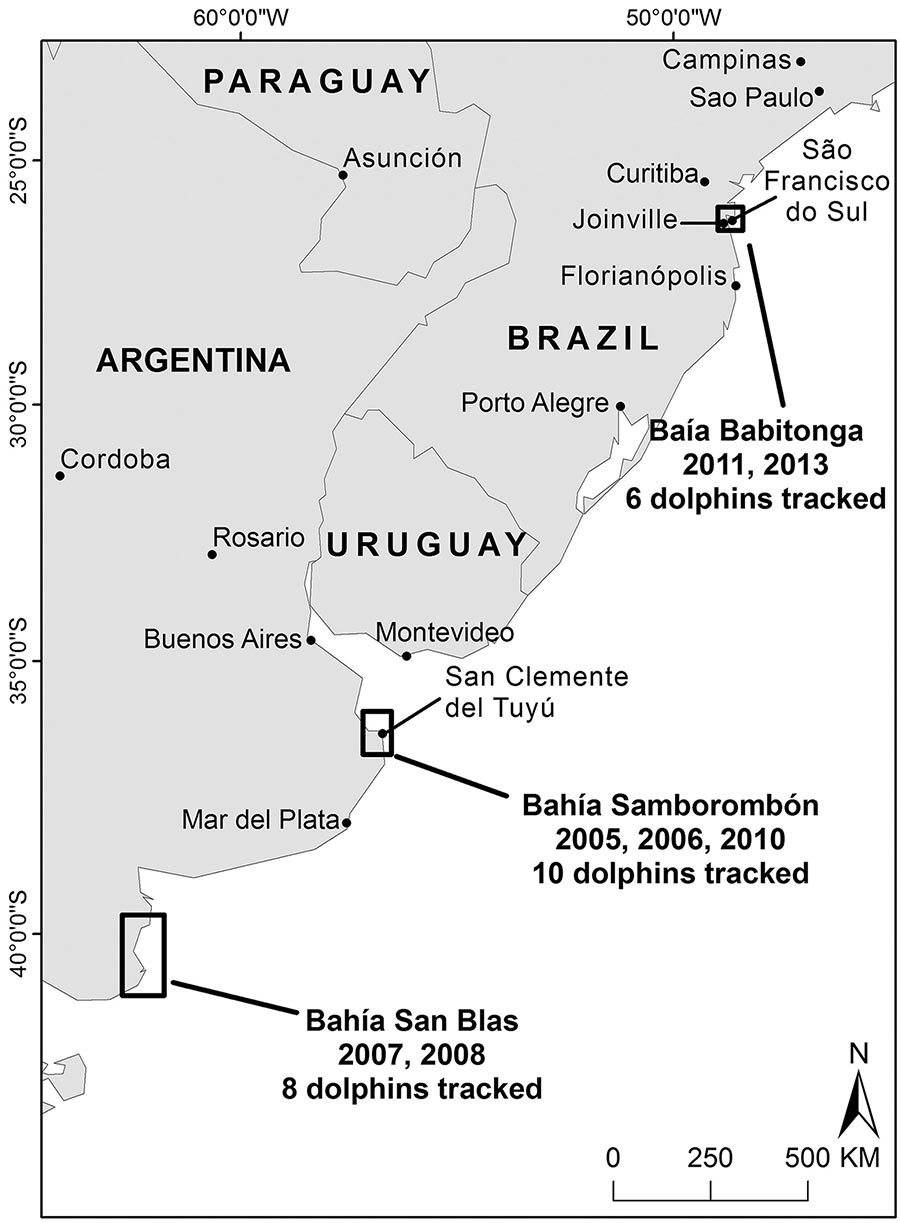
Franciscana dolphins were tagged and tracked at two sites in Argentina, which were experiencing different levels of artisanal gill net fishing (2005, 2006, 2007, 2008, and 2010), and at one site in Brazil (2011 and 2013) with coastal infrastructure development, and also artisanal gillnet fishing. As these dolphins are small and frail, special care was used to reduce stress from tagging activities. See Dr. Randall Wells, invited speaker to IUCAWA 2014)
Three kinds of electronic tags were attached to their dorsal fins: VHF (3 individuals), Argos satellite-linked location-only (13 individuals) and Argos satellite-linked location and depth-transmitting (8 individuals).
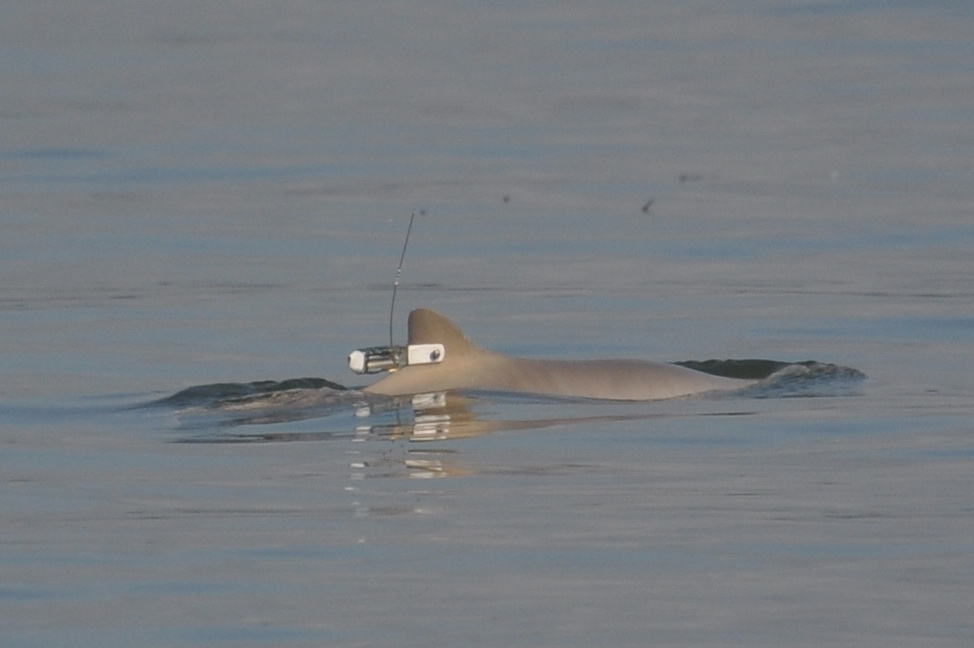
Franciscana dolphins tracking analysis: ranging close to home
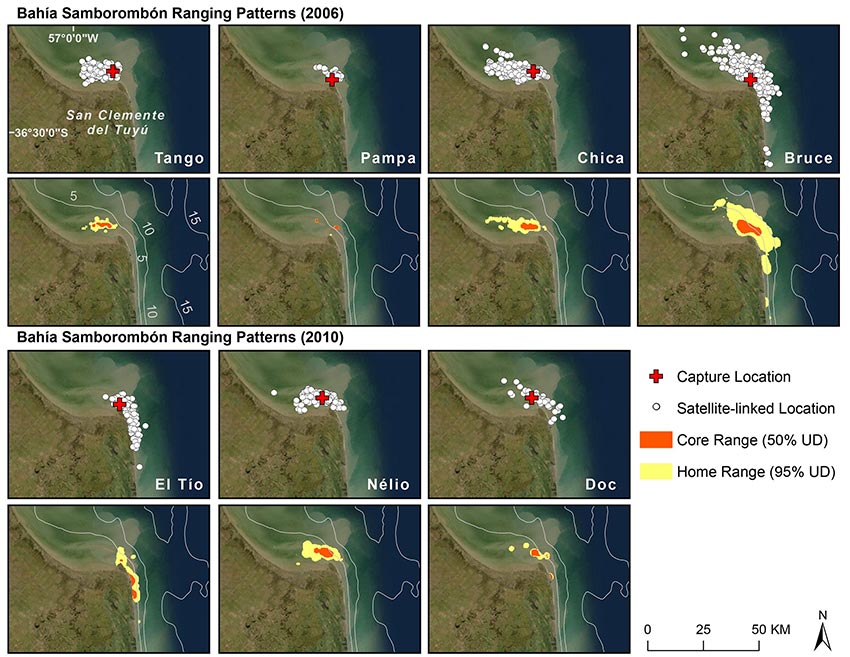
Satellite-linked location data were used as input data to calculate overall home (95% utilization distribution [UD]) and core (50% utilization distribution) ranging areas. Overall, the franciscana dolphins did not range far. Home range sizes were quite different, depending on the sites (5–7 km2 for Baía Babitonga site, 51–312 km2 for Bahía Samborombón, and 49–1,014 km2 for Bahía San Blas). Part of this may be due to prey concentration patterns, but other factors are likely involved as well. Human activities may be involved in restricting the dolphins’ range, too.
For each dolphin with a location and depth-transmitting tag, dive time was calculated and binned. Franciscana dolphins seem to dive down to the seafloor on occasion, whatever the depth, but they favor shallow waters in general. They are known to consume fish living in all parts of the water column, including benthic species. Tides influence dolphin habitat use, with animals moving further into the bays on incoming and high tides, especially in Argentina.
Conservation considerations and recommendations
Involvement in the study seems to have had an impact on some of the fishermen who helped to capture and release the franciscana dolphins. Some were willing to test alternate fishing gear afterwards to try and reduce bycatches.
The home range sizes and stability should be taken into account in future management and conservation decisions. As the anthropogenic threats on the species are increasing, more effort should be brought for the conservation of franciscana dolphins, in coastal areas such as the ones studied here, but also in more open-ocean areas. There, other populations may have other behaviors, and be exposed to some of the same as well as different threats.
Reference and link
- R.S. Wells, M.J. Cremer, L.G. Berninsone, D. Albareda, K.A. Wilkinson, M.A. Stamper, R.L. Paitach, P. Bordino, 2021: Tagging, ranging patterns, and behavior of franciscana dolphins (Pontoporia blainvillei) off Argentina and Brazil: Considerations for conservation. Mar Mam Sci. 2021;1–35. https://doi.org/10.1111/mms.12879
- sarasotadolphin.org
Main Photo: Argentinian researchers prepare to release a tagged franciscana (credit Chicago Zoological Society’s Sarasota Dolphin Research Program)

![a whale and the boat used to equip it, taken during a campaign in 1990 (C. Moriaz) (from [Viale et al., 2019])](https://www.argos-system.org/wp-content/uploads/2022/02/whale-1-150x150.jpg)
